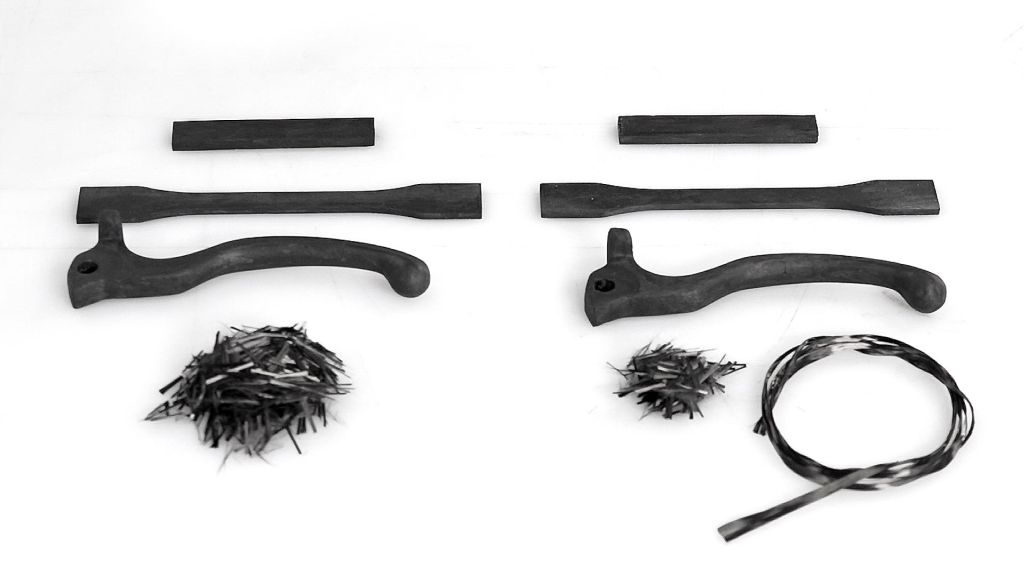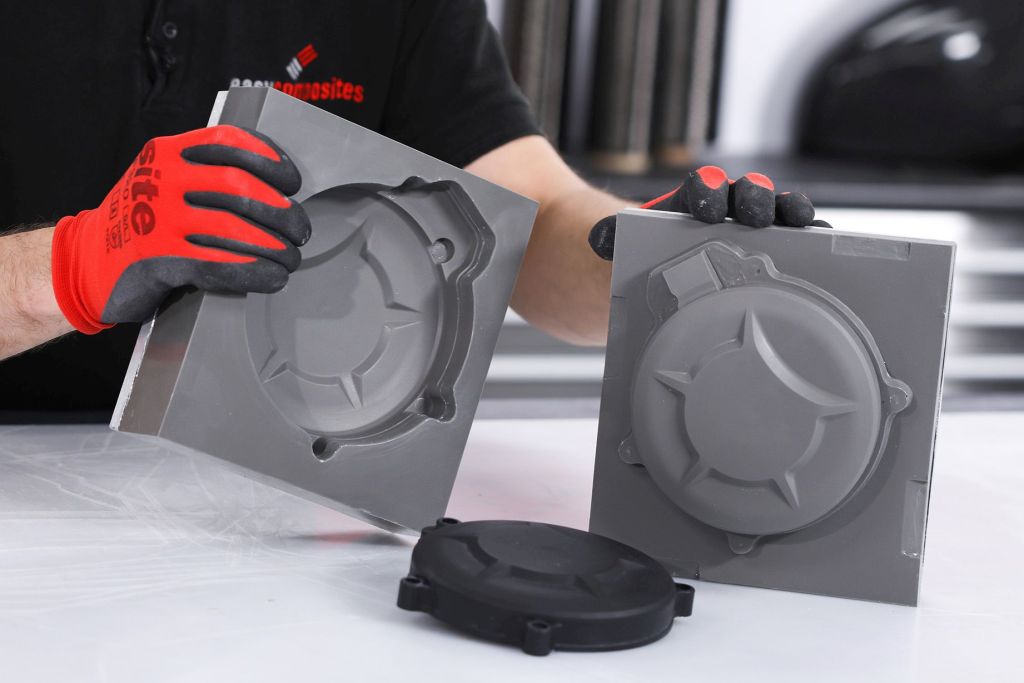Forged from carbon

Easy Composites investigates the mechanical performance of ‘forged’ carbon fibre components. Composites in Manufacturing reports.
Composite materials manufacturer and distributor, Easy Composites has published a new report and video investigation into the mechanical properties of compression-moulded short-strand carbon fibre laminate, popularly described as ‘forged carbon’.
The video and report are a follow up to earlier videos where the company demonstrated practical ways in which accurate, double-side ‘forged’ carbon fibre components could be produced from 3D-printed or cast epoxy compression tools. This latest video compares the mechanical performance of short-run/protype processes - forged carbon fibre, 3D-printed Onyx, and Markforged 3D-printed continuous carbon fibre, with the original cast aluminium component.

Easy Composites’ original demonstration into ‘forged’ carbon fibre compression moulding showed how this process can be used to quickly turn around accurate, detailed, solid carbon fibre components without the need for expensive tooling or production equipment.
The company demonstrated the production of two different components, a flywheel cover and a brake lever, which were moulded using randomly oriented short-strand ‘chopped tow’ carbon fibre and a low viscosity epoxy resin. In both cases the reinforcement and matrix were compression moulded between matched tools.
The tools for the brake lever had been 3D-printed on a conventional FDM printer, whereas the flywheel cover tools had been produced by casting aluminium-filled epoxy tools directly off the original component. In the demonstration the 3D printed tools are described as suitable for up to 2-3, whereas the cast epoxy tools are said to be adequately robust for ongoing production use.
Comparison with alternatives
Easy Composites suggest this process as a viable option for the production of smaller prototype, one-off, or short-run components with superior mechanical performance compared to alternatives such as 3D printed components.
In the video, Easy Composites’ technical director, Paul Statham, runs a series of mechanical tests comparing ‘forged’ carbon fibre tokens and components with those made from 3D-printed Onyx, a carbon fibre enhanced filament that can be used in a conventional FDM 3D-printer, Markforged’s continuous carbon fibre 3D print - a highly specialised 3D printer which can print with continuous carbon fibre filament, and an aluminium component.
In addition to the standard forged carbon component, Easy Composites also tested a ‘hybrid’ version which had been reinforced with a combination of short-strand chopped tow and selectively placed continuous tow.

A ‘lever pull’ test was set up to simulate real-world use of the brake lever component. In the test, the brake lever was secured in a fixing jig through its pivot point with its movement restricted by the actuator block. Force was applied to the lever to simulate a finger-pull. The test measured the deflection of the lever at 10kg load and also the maximum load before permanent deformation (yield).
The results show that the strongest lever on test was the ‘hybrid’ forged carbon component that had been optimised with placement of some continuous tow, followed by the standard forged carbon, then cast aluminium, Markforged’s continuous carbon fibre and finally 3D printed Onyx.
The stiffest lever was also the hybrid forged carbon fibre component which only deflected 0.35mm with a 10kg force applied, closely followed by the aluminium and standard forged carbon fibre, both at 0.4mm deflection. Markforged was noticeably less stiff at 1.75mm deflection and the Onyx result was effectively void due to deflecting beyond the scope of the test at more than 20mm.
Conventional flexural and tensile tests were performed on standard dimension test tokens made from the same materials. The flexural test again showed the best performance from the hybrid forged carbon fibre but was followed by the cast aluminium, then standard forged carbon fibre. The Markforged continuous carbon fibre performed less well in this test, probably due to the relatively small dimensions of the token and the fact that the Markforged process has to print several layers of unreinforced thermoplastic as the outer layers of the print. In comparison with the other materials on test, the stiffness of the 3D printed Onyx was negligible.
Testing times ahead
In the tensile test, the hybrid forged carbon fibre performed unsurprisingly well, given its significant proportion of unidirectional tow aligned in the load direction, exhibiting more than twice the tensile strength of any other material on test. Aluminium and the Markforged print performed equally well, with this test playing to the strengths of the Markforged print which, like the hybrid forged carbon sample, also had a high proportion of continuous fibre aligned with the load direction.
The tensile test placed the standard forged carbon fibre fourth, noticeably down on the Markforged print and aluminium and highlighting one of the obvious compromises of non-continuous, randomly oriented reinforcement. It is worth noting however that due to the lower density of the material, the specific tensile strength of the standard forged carbon fibre sample is still higher than cast aluminium, even in a straight tensile test.
Whilst Easy Composites is keen to point out that the testing was primarily comparative and, owing to the wide disparity between the different materials, not undertaken to any specific test standards, the results indicate that even randomly oriented short-strand carbon fibre components will significantly outperform the best standard 3D print, and on most metrics, outperform both Markforged 3D printed continuous carbon fibre and cast aluminium.
When unidirectional tow is selectively added to the chopped tow in the hybrid layup, the mechanical performance of the resulting component significantly outperformed aluminium on all metrics.
Although there is no suggestion that this short-strand compression moulding technique will replace more conventional ‘continuous fibre’ methods of carbon fibre component production, the process does seem to offer intriguing potential for the production of low-volume components or bespoke solutions to particular engineering challenges.
Easy Composites’ full original report discusses the tests and findings in more detail and can be read and watched in the ‘Learning Area’ of its website.









